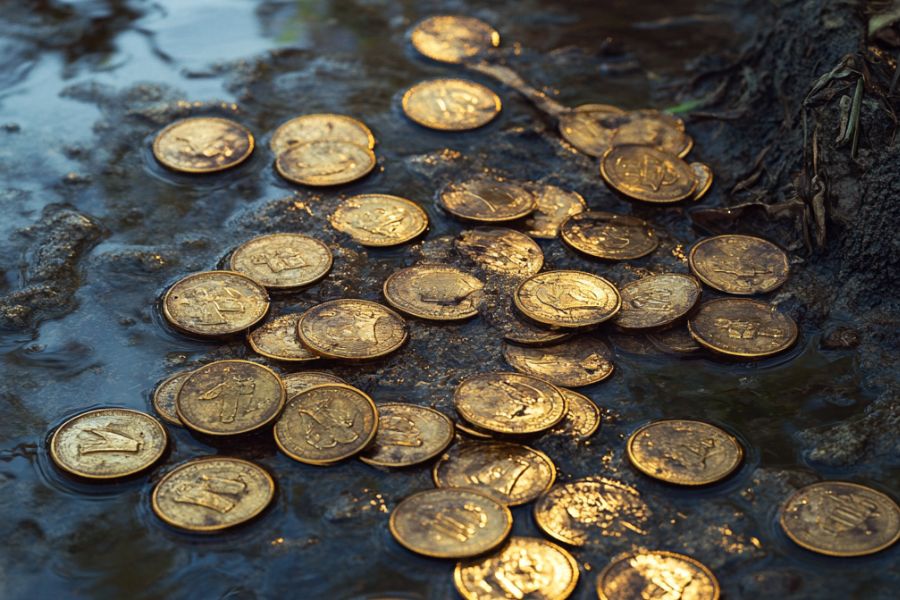California’s treasures are way more exciting than most people realize. Our state’s history has countless stories of massive discoveries worth millions of dollars.
Maybe you’ve driven past some of these spots where lucky people struck gold without even knowing it. From random beachcombers finding Spanish coins to backyard treasure hunters with metal detectors stumbling onto fortunes, the discoveries keep happening right here in our own neighborhoods.
Local treasure hunters still search all over our state, and many of them end up finding amazing relics and valuables.
We’ll walk you through the remarkable treasures people have uncovered across the state, from the famous to the surprising.
If you decide to search for your own small treasures, the only thing you might want besides a good pair of boots is Rock Chasing’s California Rocks & Minerals Identification Field Guide.
It helps you quickly recognize the rocks and minerals you can find so you don’t spend hours guessing or accidentally pass by something special without realizing it.
Amazing Treasures That Have Been Found In California
Some of the most incredible treasures unearthed in California include Gold Rush hoards, long-lost shipwrecks, and buried caches of gold coins. But countless riches are still waiting to be found.
Once you’ve discovered these remarkable finds, be sure to explore our list of the 20 Treasures Hidden In California that are worth millions.
Saddle Ridge Hoard – $15,000,000+
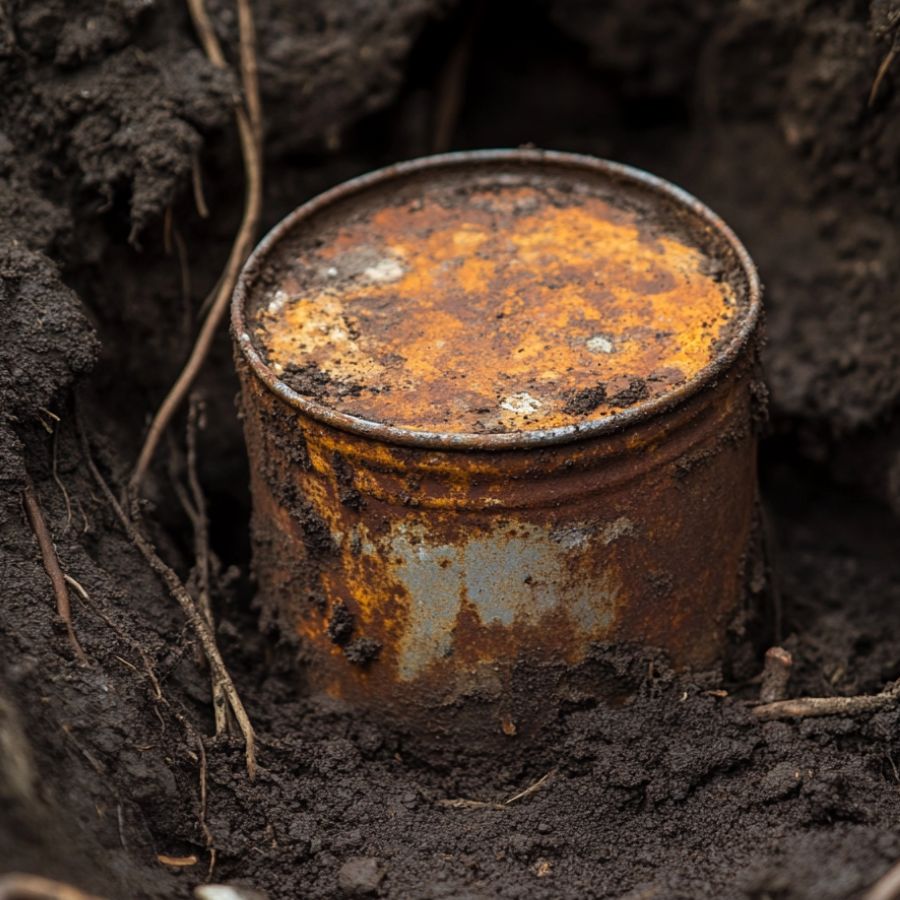
In 2013, a couple in Northern California found one of the greatest buried treasures in U.S. history. While walking their dog, they noticed an old can sticking out of the dirt. When they dug it up, they discovered more cans filled with 1,427 gold coins from the 19th century.
Coins where in mint condition, some never used at all. Experts beleive someone buried them during the Gold Rush era but no one knows who or why. The coins were mostly $20 gold pieces, with a few smaller denominations.
That couple kept their location a secret to avoid treasure hunters digging up their land. They later sold some of the coins through a dealer to avoid drawing too much attention.
How much the treasure would be worth today
Today, the Saddle Ridge Hoard could be worth around $15 million or more.
Most people don’t realize how many incredible rocks California hides in its mountains, deserts, and beaches. This guide shows exactly what you’ve been walking past.
🌈 300+ color photos of real California specimens
🪨 Raw + polished examples make identification simple
🏜️ Covers coastlines, gold country, Sierras & more
💦 Waterproof pages built for real outdoor use
Fricot Nugget – $1,500,000+
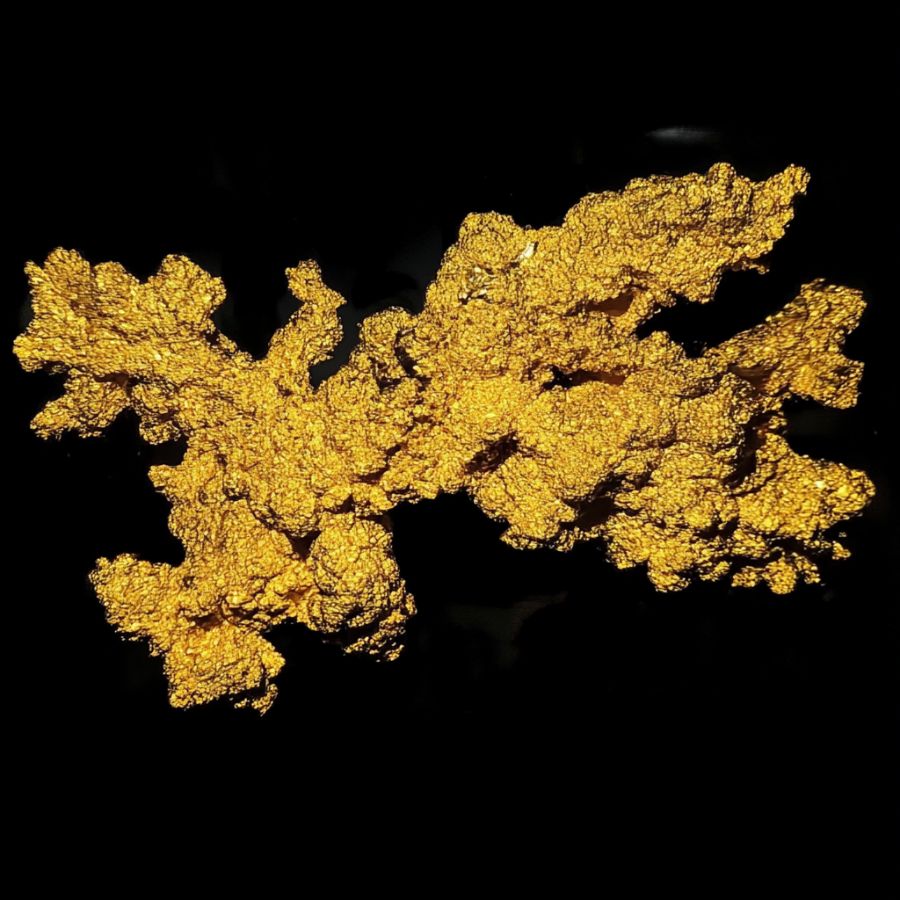
Fricot Nugget is a stunning peice of gold that was found during the California Gold Rush. It weighs 201 troy ounces and has a unique crystalized structure. This makes it one of the largest and most beautiful gold nuggets ever discovered.
It was found in the 1860s but managed to survive a time when most large nuggets were melted down. The nugget was hidden away for years until it resurfaced in a private collection.
Because of its size and shape, it is more valuable than just its gold content. Gold collectors and museums see it as an important artifact from the Gold Rush era.
The Fricot Nugget is now displayed at the California State Mining and Mineral Museum, where visitors can see it up close.
How much the treasure would be worth today
The Fricot Nugget could fetch $1.5 million at auction.
San Pedro High School Fossil Find – $10,000,000+
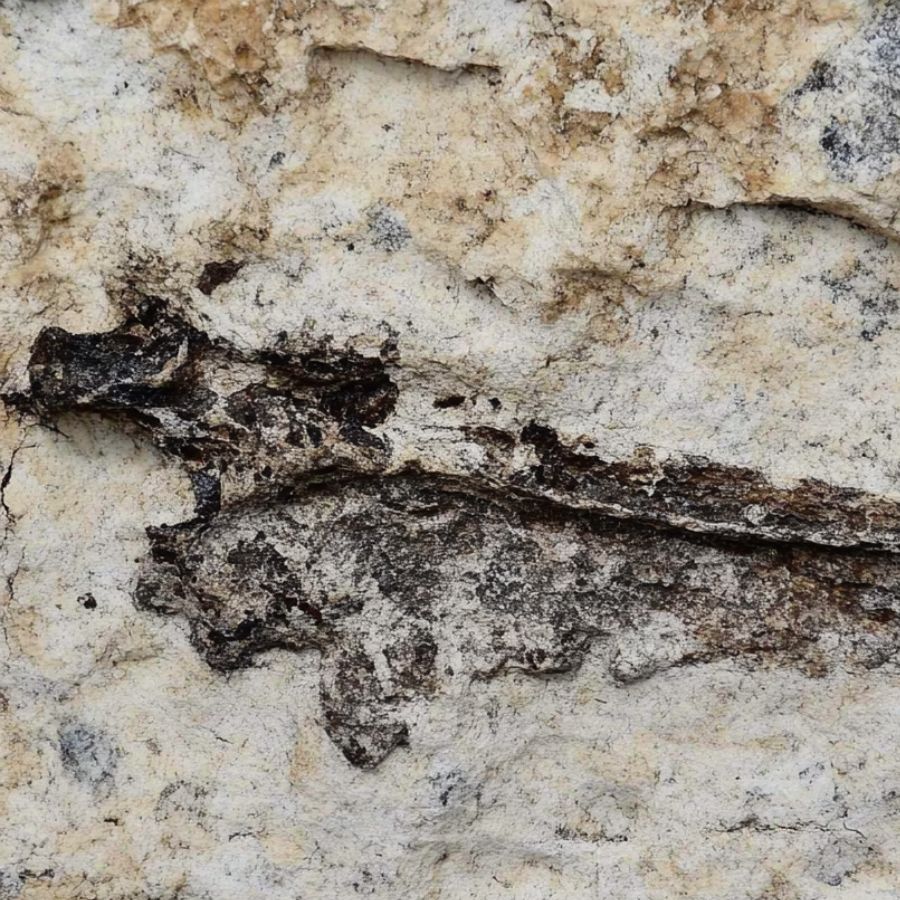
In 2024, a simple construction project turned into an incredible discovery. Workers at San Pedro High School in California uncovered a fossil site filled with prehistoric marine life.
They found millions of fossils from nearly 9 million years ago, including megalodon teeth and ancient whale bones. The site provided a rare look at ocean life from a time long before humans existed.
Scientists rushed to examine the fossils, realizing their importance. The bones and teeth belonged to animals that lived in a warm, shallow sea covering what is now California.
This find helped researchers understand how marine life evolved over time. Some of the fossils were removed for study, while others remained in the ground for future research.
How much the treasure would be worth today
Megalodon teeth can sell for $3,000 to $10,000 each, and rare whale fossils can be worth $50,000 or more. The total value of this fossil find could exceed $10 million depending on the rarity of individual specimens.
USS Stewart Wreck – $5,000,000+
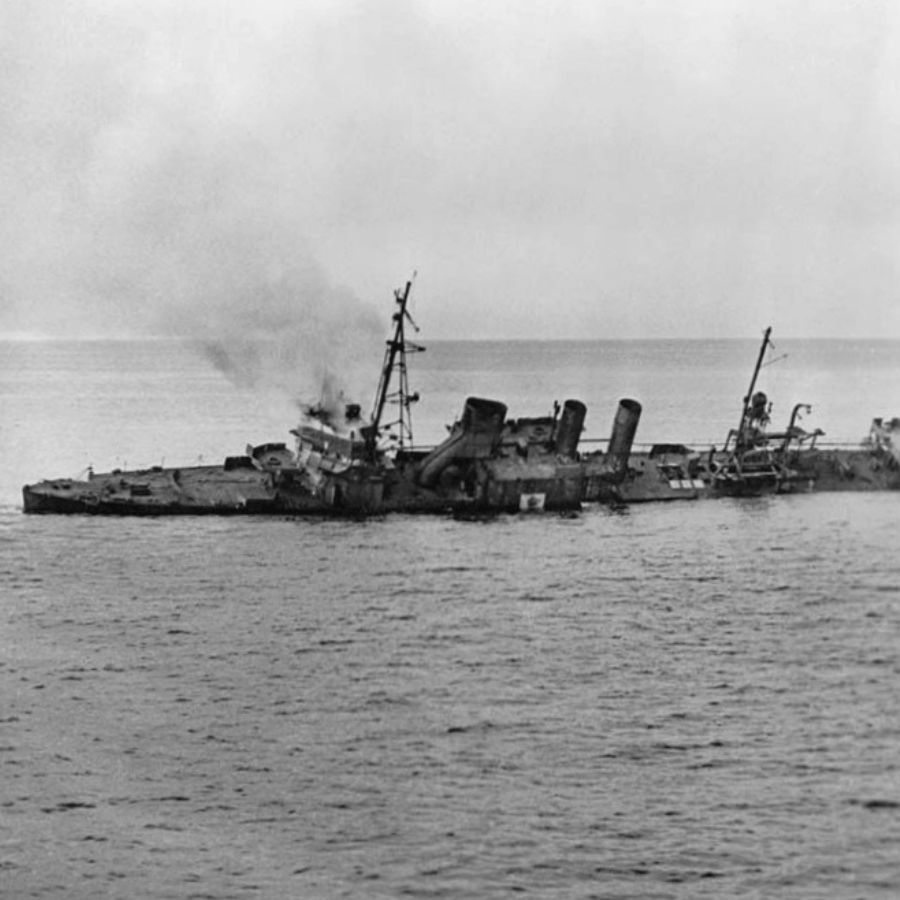
The USS Stewart, a WWII destroyer, was lost for decades until it was discovered off the California coast in 2024. Known as the “Ghost Ship of the Pacific,” it was a powerful warship that served in multiple battles. It disappeared under mysterious circumstances, leaving historians puzzled.
When it was finally found, it was resting upright at a depth of 3,500 feet. The ship’s discovery excited researchers and military historians. It was still mostly intact, with some of its original equipment preserved.
Underwater explorers captured images and videos, showing the ship as it had been frozen in time. The wreck added to the history of naval warfare and helped experts learn more about ships from that era.
How much the treasure would be worth today
If salvaged, parts of the USS Stewart could be worth over $5 million to collectors and museums. However, as a historical war relic, it is considered priceless.
Sutter’s Mill Meteorite – $1,000,000+

In 2012, a bright fireball streaked across the sky above California. It was a rare carbonaceous chondrite meteorite, and fragments landed near Sutter’s Mill.
This type of meteorite is one of the oldest materials in the solar system. Scientists were thrilled because it contained complex organic compounds, possibly the building blocks of life.
Meteorite hunters quickly searched the area to collect pieces. Some of the fragments weighed only a few grams but were still extremely valuable.
These space rocks helped researchers understand the early days of our solar system. Some pieces ended up in museums, while others were sold to private collectors.
How much the treasure would be worth today
The Sutter’s Mill meteorite fragments have sold for up to $1,000 per gram. With a total known weight of around 1,000 grams, the meteorite pieces could be worth approximately $1 million today.
Tolay Lake Charmstones – $2,000,000+

For centuries, the area around Tolay Lake in California has been a sacred place. Over 1,000 prehistoric charmstones have been found there, showing that it was important to Native American tribes.
These smooth, carved stones were used in ceremonies, possibly for healing or spiritual protection. Each one has a unique shape, and some resemble animals or human figures.
Archaeologists believe the stones date back thousands of years. Some were buried in clusters, suggesting they were left as offerings. Others were found near fire pits or in areas where people may have gathered for rituals.
The exact purpose of these charmstones remains a mystery, but they are among the most significant Native American artifacts in California.
How much the treasure would be worth today
Rare charmstones can sell for $2,000 to $5,000 each, making the entire collection worth $2 million or more today.
Cherokee Diamonds – $10,000,000+

In the 1860s, a surprising discovery was made in Cherokee, Butte County. Miners searching for gold found something unexpected in the riverbeds. They uncovered diamonds, marking one of the earliest recorded instances of diamond discovery within a gold mining context in the United States.
Excitement quickly spread, and people rushed to Cherokee to try their luck. Some diamonds were small, but others were large enough to be cut into gemstones. Unlike gold, diamonds were harder to find, and the supply was limited. Still, the idea of diamond mining in California fascinated people.
Over time, the diamond rush faded as the number of discoveries slowed. Today, Cherokee is remembered for this unusual chapter in American mining history. The find remains a rare example of California’s diverse natural treasures.
How much the treasure would be worth today
The Cherokee diamonds could be worth over $10 million today.
Carson Hill Gold Nugget – $6,200,000+

One of the biggest gold nuggets ever found in the United States came from Carson Hill in Calaveras County. Weighing 195 pounds, this massive nugget was a miner’s dream come true. It was found during the height of the California Gold Rush, a time when people traveled from all over the world hoping to strike it rich.
The size of the nugget made it almost unbelievable. Most gold is found in small flakes or tiny nuggets, but this was a solid chunk of nearly pure gold.
News of the discovery spread quickly, drawing more miners to the area. The nugget was displayed for a time, but like many large gold finds, it was eventually melted down.
Carson Hill remained an important gold mining location for years. Even after the huge nugget was gone, miners continued to dig in hopes of finding another. Today, its discovery is remembered as one of the greatest finds of the Gold Rush era.
How much the treasure would be worth today
The Carson Hill Nugget would be worth around $6.2 million today.
Empire Mine – $10,000,000,000+

Empire Mine was one of the richest gold mines in California’s history. Located in Nevada County, it operated for over 100 years and produced massive amounts of gold.
The mine was known for its deep tunnels, reaching thousands of feet underground. Miners used advanced equipment for the time, including powerful drills and pumps to remove water from deep shafts.
Over the years, the mine yielded about $100 million worth of gold. It helped shape the local economy and provided jobs for thousands of workers.
Unlike many mines that closed after the Gold Rush, Empire Mine remained active until the 1950s. Even then, geologists believed more gold was still buried deep below.
The site is preserved as a reminder of the determination and skill it took to extract gold from deep within the earth.
How much the treasure would be worth today
The Empire Mine produced about 5 million ounces of gold, which would be worth approximately $10 billion today.
SS Winfield Scott Shipwreck – $5,000,000+

In 1853, the steamship Winfield Scott sank off the coast of California near Anacapa Island. The ship was carrying gold seekers and cargo when it struck rocks and went down.
Fortunately, all passengers survived, but the ship and its contents were lost beneath the waves. For over a century, the wreck remained hidden under the ocean. It was finally discovered in the 1980s, revealing a collection of historical artifacts.
Divers exploring the wreck found a variety of objects. Among them were beautiful blue-and-white Chinese ceramics, used by passengers during the voyage. They also uncovered bronze cannons, which had been part of the ship’s defenses.
These discoveries provided a glimpse into life aboard a steamship during the mid-1800s. The artifacts have since been studied and preserved for historical research.
The Winfield Scott was part of an important time in U.S. history. It was one of many steamships that carried hopeful miners to California during the Gold Rush. Its wreckage now serves as an underwater museum, offering a rare look at maritime travel in the 19th century.
How much the treasure would be worth today
The recovered artifacts could be worth $5 million or more.
If your kids constantly ask “What’s this rock?”, this guide finally gives you an answer you don’t have to Google later. Quick photos, simple descriptions, and rugged pages make ID’ing rocks fun instead of frustrating.
🔍 Fast visual matching—no geology background needed
💦 Wipe-clean pages made for creeks, beaches & dirt
📚 Simple explanations for beginners of all ages
🌄 Great for California hikes, creek beds & camping trips
Daisy Cave Archaeological Site – $10,000,000+

Daisy Cave is one of the most important archaeological sites in North America. Located on San Miguel Island, it contains artifacts from early human settlers.
The cave has provided evidence of human activity dating back over 10,000 years. This makes it one of the oldest known sites of human habitation on the West Coast. The discoveries there have changed how historians understand ancient people in California.
Excavations at the site revealed delicate basketry, stone tools, and other artifacts. The basket fragments are among the oldest ever found in North America. They show that early inhabitants had advanced skills in weaving and crafting.
Stone tools discovered in the cave suggest they hunted and processed food in the area. Scientists believe the site was used for thousands of years by different groups of people.
How much the treasure would be worth today
The artifacts from Daisy Cave could be valued at $10 million or more.
Mojave Nugget – $750,000+
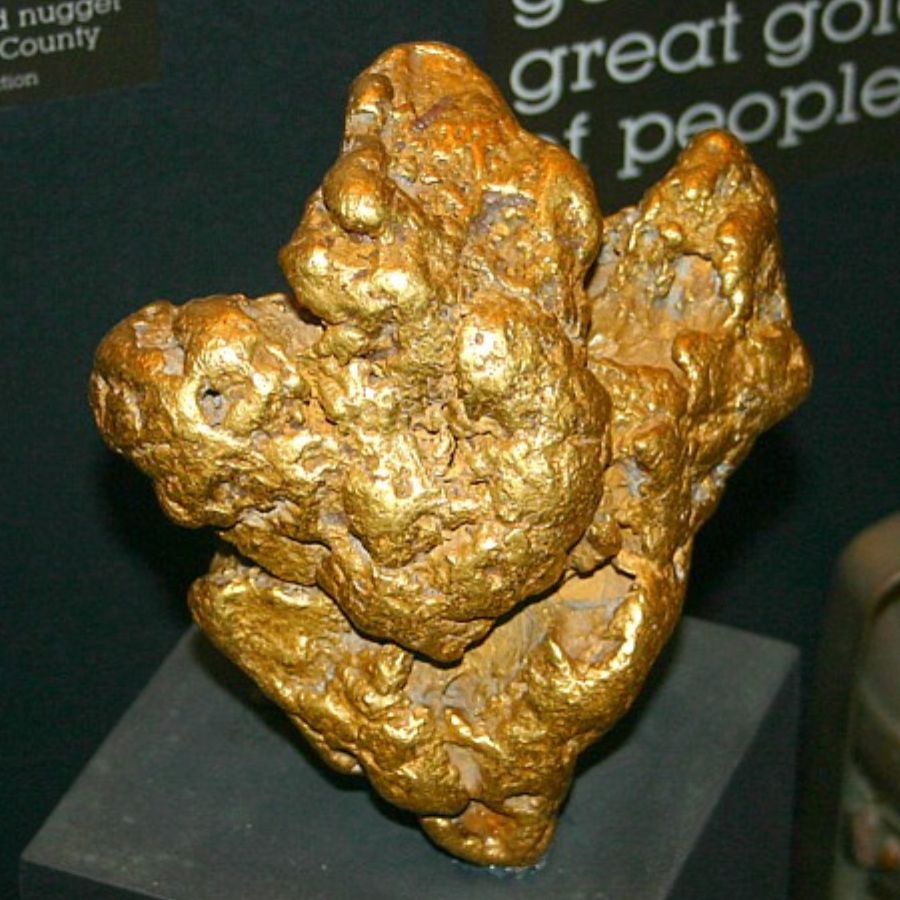
Mojave Nugget was found in 1977 by prospector Ty Paulsen in the Stringer district near Randsburg, California. Using a metal detector, Paulsen unearthed this massive 156-troy-ounce (4.9 kg) gold nugget.
This incredible find became part of the Margie and Robert E. Petersen Collection, which includes 132 gold specimens with a total weight of 1,660 troy ounces (52 kg).
The entire collection, including the Mojave Nugget, was donated to the Natural History Museum of Los Angeles County, where it remains on display today.
As of 2022, the bullion value of 4.9 kg of gold is estimated at around $400,000, though its rarity and historical significance make it worth far more to collectors and museums.
How much the treasure would be worth today
The Mojave Nugget could now be valued at $750,000 or more.
Calico Early Man Site – $20,000,000+

The Calico Early Man Site is one of the most debated archaeological sites in the United States. Located near Barstow, California, it has yielded stone tools and fossilized animal bones.
Some researchers believe these discoveries suggest human activity in the area over 100,000 years ago. If true, this would make it one of the oldest human settlements in North America.
Archaeologists have found chipped stones that resemble tools, suggesting early humans lived in the region. They also uncovered fossils of extinct animals, providing clues about the prehistoric environment.
However, not all experts agree on whether the stone tools were made by humans or shaped by natural forces. The site has sparked ongoing debates in the scientific community.
How much the treasure would be worth today
The artifacts could be worth $20 million, as they would rewrite early human history.
Kennedy Mine – $2,000,000+

The Kennedy Mine was one of the most productive gold mines in California. It is located in Amador County and was once the deepest mine in the world.
During its years of operation, it produced a huge amount of gold, helping fuel the California Gold Rush. The mine had miles of tunnels stretching thousands of feet underground.
By the time it closed in 1942, the Kennedy Mine had produced over a million ounces of gold. Today, it is a historical site where visitors can tour parts of the old mine and see how miners lived and worked.
It remains a symbol of California’s rich mining history and the determination of those who sought their fortune underground.
How much the treasure would be worth today
The Kennedy Mine’s total production would be worth over $2 billion today.
San Diego Shipwreck – $150,000+
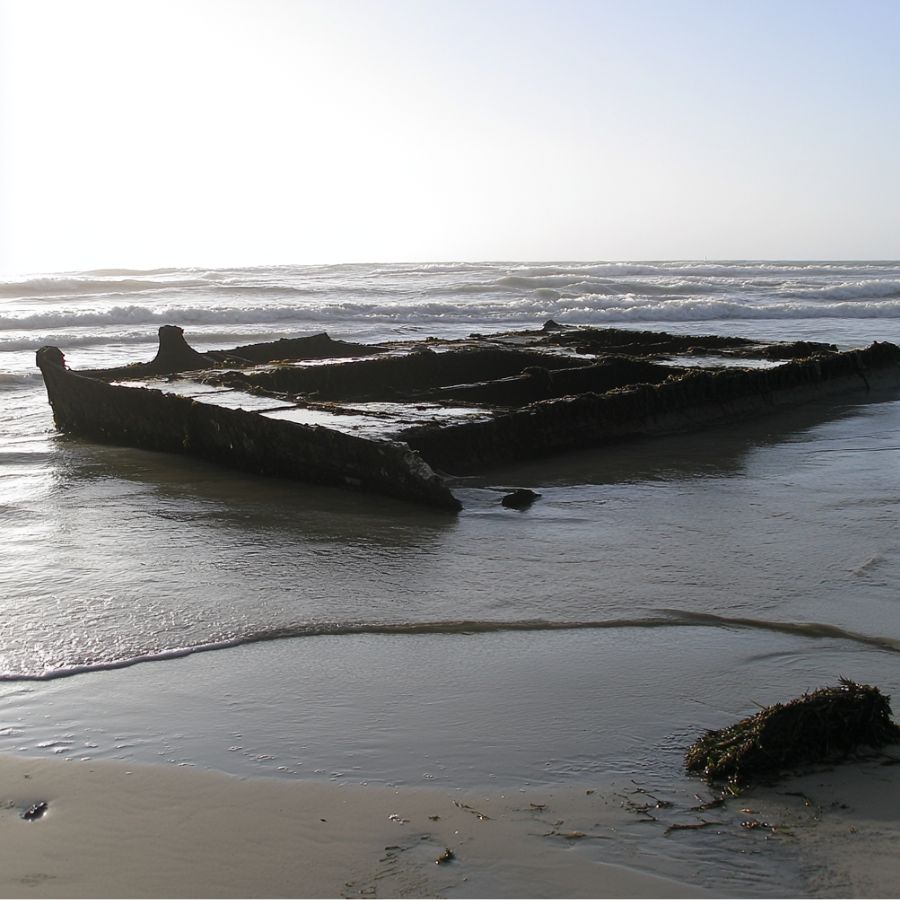
Off the coast of San Diego County lies the wreck of the SS Monte Carlo, a concrete oil tanker launched in 1921. In the 1930s, it was converted into a gambling and prostitution ship, operating in international waters to circumvent state laws.
On New Year’s Day 1937, during a storm, the ship broke free from its anchor and ran aground near Coronado Beach. Since then, the wreck has remained partially buried in the sand, occasionally becoming visible during low tides and after strong storms.
How much the treasure would be worth today
There have been rumors of buried treasure aboard the SS Monte Carlo, with some speculating that up to $150,000 worth of silver coins may remain within the wreckage.
Juana Maria’s Whale-Bone Hut – $5,000,000+

Juana Maria was a Native American woman who lived alone on San Nicolas Island for 18 years. She was the last known member of her tribe. When she was finally found and taken to the mainland in 1853, she had built a unique home out of whale bones.
In 1939, archaeologists discovered what they believed to be the remains of her hut. The structure was made from large whale bones, carefully arranged to provide shelter. It showed her incredible survival skills and ability to use available resources.
Along with the bones, researchers found tools and other objects she may have used. The discovery helped confirm details of her story, which had been passed down for generations.
Juana Maria’s story inspired the famous book “Island of the Blue Dolphins.” Her lonely survival on the island fascinated people for decades.
How much the treasure would be worth today
The artifacts from Juana Maria’s hut could be worth around $5 million.
Chumash Stone Bowls – $2,000,000+

At Goleta Beach, archaeologists discovered a set of seven stone bowls beneath the water. These bowls are linked to the Chumash people, a Native American group that lived along the California coast.
They are believed to date from 1200 BC to AD 1100. The discovery suggests that the Chumash may have used the area for ceremonies or daily life.
Since the bowls were found submerged, it raises questions about past sea levels and environmental changes. The Chumash were known for their maritime culture, and these bowls may have been part of fishing or trading activities.
Today, the bowls are studied to uncover more about their origin and use. They remain one of the most unique finds connected to early Native American coastal life.
How much the treasure would be worth today
The Chumash stone bowls could be worth $2 million.
SS Brother Jonathan – $80,000,000+

The SS Brother Jonathan was a steamship that sank in 1851 near Crescent City, California. It was carrying gold, passengers, and supplies during the Gold Rush era.
A violent storm caused the ship to hit rocks, and it quickly went down. Many on board died, making it one of the worst maritime disasters on the West Coast.
For over 100 years, the shipwreck remained undiscovered. In the 1990s, treasure hunters finally located the wreck and began recovering artifacts. Among the finds were gold coins, jewelry, and other valuables.
The wreck of the SS Brother Jonathan is considered one of the greatest underwater treasure discoveries in the U.S. The gold and artifacts helped tell the story of those who traveled west in search of fortune. The ship’s legacy remains a symbol of the risks people took during the Gold Rush era.
How much the treasure would be worth today
The SS Brother Jonathan’s treasure could now be valued at $80 million or more.
Butte County Nugget – $600,000+

In 2014, a man searching with a metal detector found an incredible 6-pound gold nugget in Butte County, California. It was a rare find, as large nuggets are uncommon in modern times.
The nugget had a beautiful natural shape and purity, making it highly valuable. Gold collectors and investors quickly took interest.
After being authenticated, it was sold at auction for $400,000. Some experts believe the nugget could have sold for even more due to its rarity.
Large gold nuggets have always fascinated people, as they are relics of the Gold Rush era.
How much the treasure would be worth today
The Butte County Nugget could now be worth around $600,000 or more.
Goleta Cannons – $5,000,000+

In 1981, five iron cannons were found off the coast of Goleta, California. The discovery sparked interest because they appeared to be from the 16th century.
Some experts believe they could be linked to the famous explorer Francis Drake, who sailed along the California coast in the late 1500s. Others think they may have come from a Spanish ship.
The cannons were encrusted with centuries of ocean buildup, but experts could still see their original design. They were carefully recovered and studied to determine their origin.
If they were connected to Drake, it would mean he traveled farther along the West Coast than previously believed. If they belonged to a Spanish vessel, it could change what is known about early exploration in the Pacific.
How much the treasure would be worth today
The Goleta Cannons could be worth over $5 million.
If these fascinating finds have sparked your interest, don’t miss our coverage of the 20 Treasures Hidden In California that are worth millions and could still be waiting to be uncovered.

